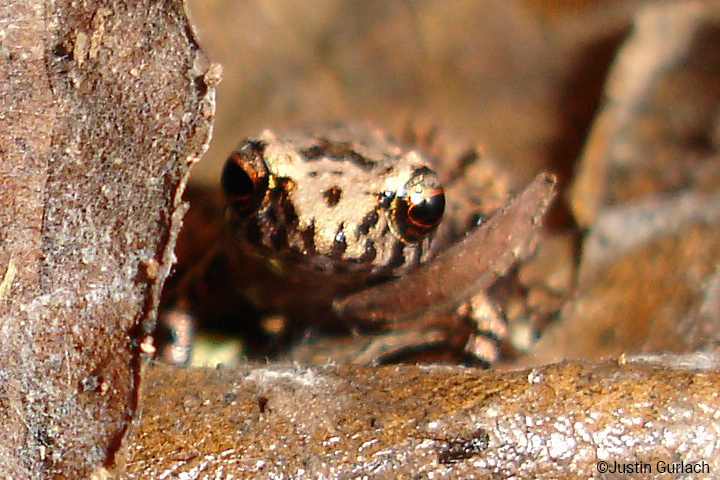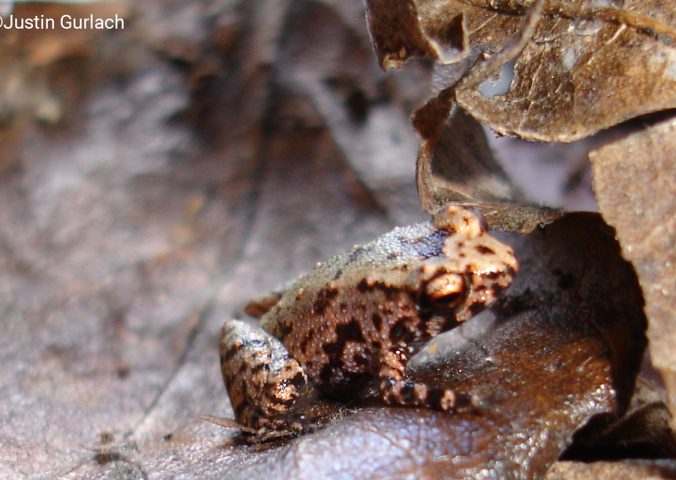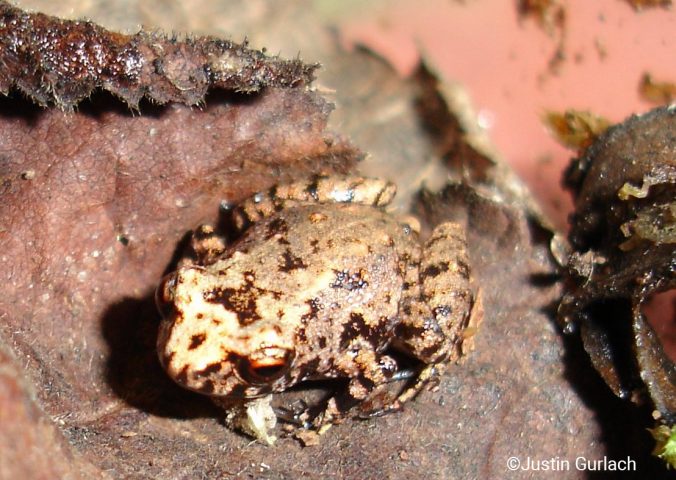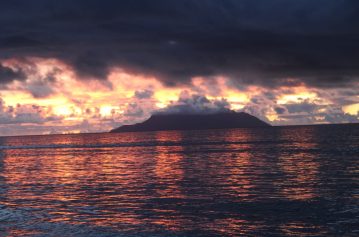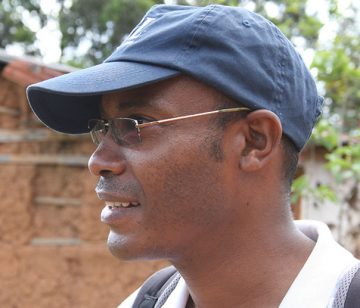About
The Seychelles frog is an incredibly tiny frog, with males reaching a maximum length of just 15 mm.
The Seychelles frog is one of four tiny frogs from the Sooglossidae family, a group of threatened frogs which diverged from their closest ancestors around 100 million years ago. This was around the same time humans and elephants last shared a common ancestor! The Seychelles frog exhibits parental care. When offspring emerge from their eggs as tiny tadpoles they immediately crawl onto the back of the guarding parent, where they are secured by mucus. The tadpoles then develop and metamorphose into miniscule froglets that leave when fully developed.
The species is locally common in its tiny range; however habitat loss, climate change, and invasive species are causing population declines. The habitat is deteriorating mainly due to increased fire and invasive species such as the crazy ant. Since 2006, population declines have been recorded in lower altitude sites, which are associated with changes in rainfall patterns, and climate change is projected to have a negative impact on the suitable areas for this species to survive.
The Seychelles frog is listed as Endangered by the IUCN Red List, and occurs in the Morne Seychellois, Silhouette and Praslin National parks. Captive colonies have been successfully maintained although successful captive breeding has not yet been recorded for this species.
- Order: Anura
- Family: Sooglossidae
- Population: Common
- Trend: decreasing
- Size: 15-20mm
EDGE Score
Distribution
This species occurs on the islands of Mahé, Silhouette and Praslin in the Seychelles, from 150-991 m above sea level.
Habitat and Ecology
The Seychelles frog inhabits leaf litter on the forest floor in both pristine and disturbed rainforests, and they are often found at the edge of forest areas. Seychelles frog are known to guard their eggs in terrestrial nests and exhibit parental care. The Seychelles frog feeds on small insects, mites and other invertebrates that live in forest litter and rotten logs.
